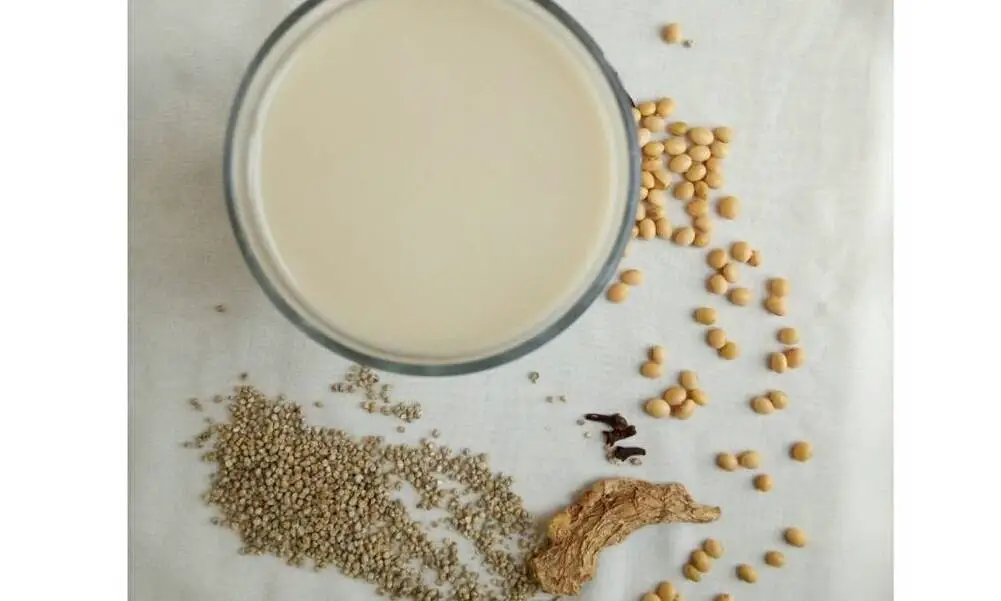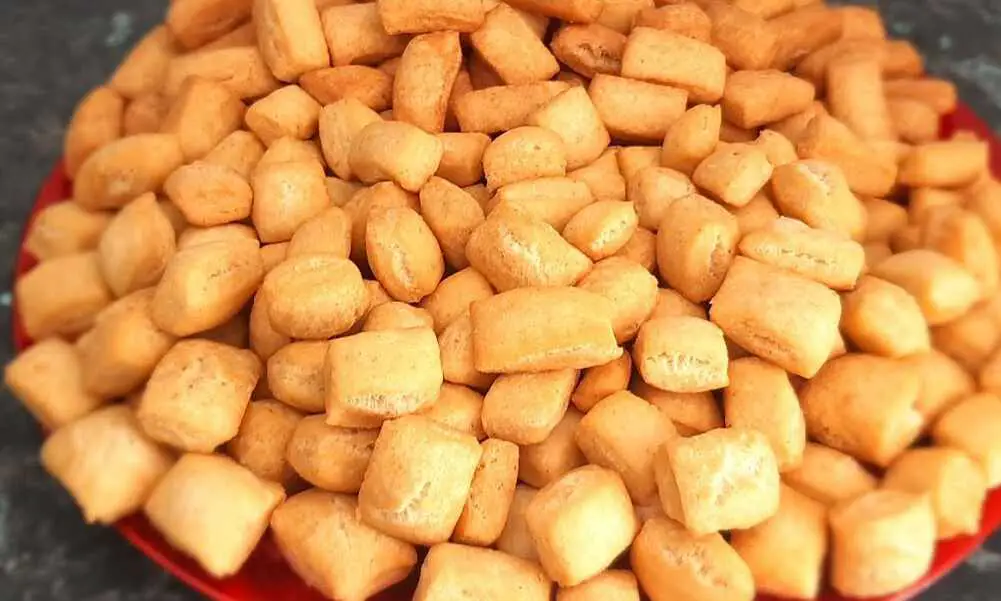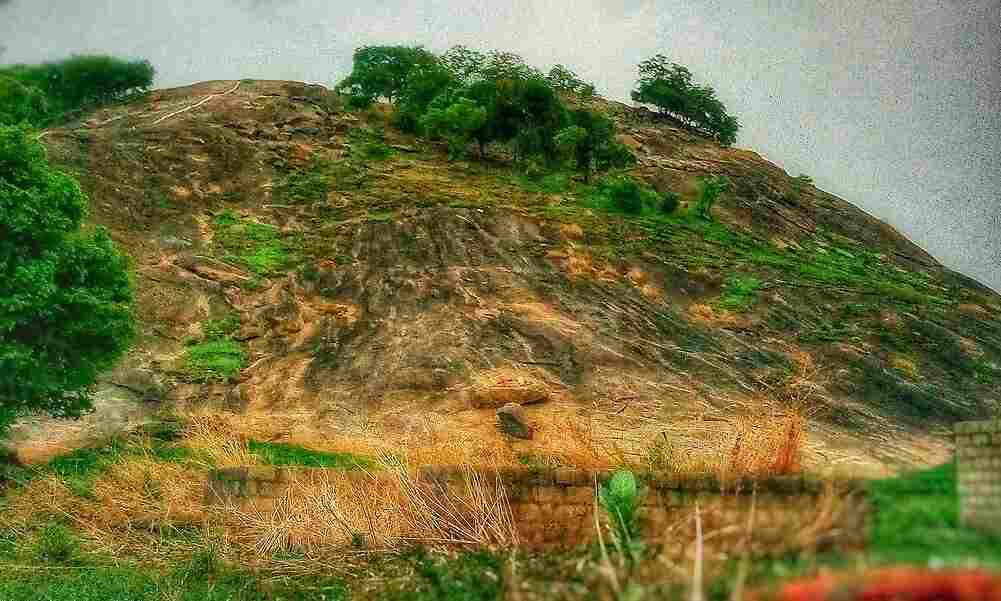
by Happiness Hassan | Dec 19, 2021 | Family & Parenting
There comes a time in every girl’s life when she needs to hear the ‘Talk’. This discussion is quite different from every other she might have had in the previous years and must be accurately communicated to her from a trusted source—parents.
Do you ever wonder how to talk to your daughter about her body changes especially when approaching puberty stage? I get it! Lots of parents out there can’t seem to put themselves together and have this one important discussion with their female child. That’s what the ‘Talk’ with your daughter is all about.
She deserves to know about her body changes, most importantly the menstruation stage as a female, before she experiences it. As parents, you would do your daughter a lot more harm by withholding this ‘Talk’ from her or letting her find out all by herself—oftentimes, from unreliable sources.
However, before you learn how to talk to your daughter about her period or body, you should understand certain terminologies.
What is the Puberty Stage?
Puberty is a process of sexual development in children that prepares them for sexual reproduction. For females, this stage is characterized by breast growth, vaginal discharge, hair in the armpit and pubic region. In addition, a period of a hormonal uprising, menstruation begins, changes in thoughts, high self-consciousness—a confused stage.
What is Menstruation?
Menstruation is the monthly discharge of blood and tissue flow from the uterus, out through the vaginal canal, within 2–7days. It’s also called a period. Furthermore, it’s normal sexual health for women during their reproductive years, controlled by certain hormones like estrogen and progesterone.
Interestingly, menstruation helps prepare every female’s body for pregnancy.
When to Have the ‘Talk’ with your Daughter
Learning how to talk to your daughter about her body changes is best done before her puberty stage, which begins earliest at age 8. It’s important to note that at this stage most girls become extremely secretive with their private lives. Oftentimes, would feel embarrassed talking about it openly, even to you as their parents. Hence, talking to her about her period might be quite difficult although not impossible.
As a parent, it’s never too early to begin talking to your daughters about their bodies because it prepares them for what is to come. Hence, how to talk to your daughter about her period begins with talks about her body changes in general which encompasses both her menstrual cycle. Unfortunately, menstruation varies from girl to girl depending on her body hormones. However, for most girls it begins at age 12, fewer girls at age 8, normally it ranges from age 8-16years.
How to Talk to Your Daughter About Her Period
1. Avoid the Formal Sit Down Discussion
Sincerely, it builds up tension in your girl child, formally having this kind of discussion—putting on the no-nonsense looks as though you’re going for warfare. She may not respond the way you expect and may end up worsening the situation. Remember, at this stage, she is secretive and feels embarrassed having these kinds of discussions.
Therefore, discuss with her in a more friendly and conducive atmosphere. This doesn’t mean you call an entire community for a party after which you begin such discussion. In contrast, do it when you both are having a good time alone. This is why you should engage more in activities that increase the love bond with your daughter. It makes it easier for you, by setting a favourable atmosphere and making your daughter feel free to share with you.
2. Although it’s Special, Don’t Make a Big Deal Out of it
As earlier established menstruation is a normal sexual stage for women during their reproductive age. Hence, there is absolutely nothing to feel ashamed of. Let your daughter know that every woman experiences it and that’s what makes her unique as a female. Therefore, she should feel comfortable about those changes when they eventually occur.
Likewise, as a parent, you must realize that it’s not so much a big deal that you feel awkward talking about or procrastinating. Perhaps, if you find yourself in such a state, brace yourself and practice how to talk to your daughter about her body—it’s better late than never.
3. Let her Know That Her little-open Secret is Safe with You
Talking to your daughter about her period is not a one-day assignment, it’s a continuous regular lesson even after it begins. Hence, your daughter needs to be assured that her secrets about her body changes are completely safe with you.
This assurance encourages her to tell you more things.
4. Buy and Read Puberty Stage Books Together
Perhaps, you still struggle to put your words together before approaching your daughter. Relax! This method is for you. Puberty related books provide you with a bunch of lines, to begin with, and set the atmosphere for such discussion.
Most importantly, you should read it together with your daughter, after which you lay more emphasis on what has been read. Ensure the chosen book is an informative and educational book fit to guide your daughter through this stage of her life.
5. Encourage Her to be Prepared
In this stage, you need to show and tell her what to do when it happens, like moving with a sanitary pad and how to use it. Also, approaching a trusted female teacher in school when not with a pad. In addition, having learned how to talk to your daughter about her period, don’t forget to educate her about how it influences her physical and emotional coordination.
For instance, her period might cause little cramps, headache, loss of appetite, irritations, mood swings among others. Furthermore, how she can minimize the side effects.
6. Use the Assistance of a Health Practitioner
The help of a trusted health practitioner is best utilized if you still struggle with how to talk to your daughter about her period. This includes a nurse, midwife, or doctor. Either of them can relate to your daughter and explain to her in the language she can best understand.
However, while this is done, stick around and perhaps you may learn a thing or two from the lesson that may be useful in the future
Conclusion
It’s surprising how many fathers assume the mother is in a better position to have this ‘Talk’ with their daughters, although she can relate better. But, learning how to talk to your daughter about her body is the responsibility of both the father and mother. However, avoid procrastination, it can be dangerous and it’s a parenting mistake to be avoided.
As a parent, how have you succeeded in having this kind of discussion with your daughters?

by Fatima Sani | Dec 18, 2021 | Local Delicacies
Today, I have come with another northern Nigerian drink for you – Kunun Zaki; Kunu means ‘pap’ the letter ‘n’ is added at the end of the word to show possession; and Zaki meaning ‘sweet’, together we have Kunun Zaki literarily translated as ‘pap for sweet’. Absurd right? Of course yes, but not its sweetness. In this article, I will be sharing with you my expertise in the preparation of Kunun Zaki. Stay with me.
It is worth noting that Southern Kaduna usually called Chongais and called by Hausas ‘Katafawa’ are best known for the making of this recipe. If you have tasted theirs, you will attest to this fact. Anyways, without making you wait for long, let’s quickly get into business!
Equipment for Making Kunun Zaki
2 bowls
Blender
Cooking pot
Cheesecloth
Ingredients
You will need the following ingredients to make Kunun Zaki
3 cups of millet
Sugar to taste
2 liters of water
Spices (dried ginger, dried pepper, and cloves (kaninfari).
Now that you know the ingredients, let’s dive into its preparation:
Procedure for Preparing Kunun Zaki
STEP 1: Pick up dirt from the millet.
STEP 2: Pour the millet into a bowl or a container and wash it with water thoroughly and drain the water. Then;
STEP 3: Pour in another fresh water and allow to soak for 6 hours. If you wish to prepare this drink in the morning, you could soak it overnight. That will do just fine.
STEP 4: By now, the millet is a bit softer than its original state. Now wash the millet again and drain the water.
STEP 5: Add ginger, pepper, and cloves (kaninfari)
STEP 6: Advisably, grind it using a blender if it is in small quantity. However, for large quantities, grind it using a grinding machine (injin nika) in the Hausa language. Grind it until it turns to paste.
STEP 7: Separate the pastes into two different bowls and add a little water to both of them.
STEP 8: Over medium heat, place a clean pot and add water to it. Allow to boil.
STEP 9: Pour the hot water into the first bowl and stir it immediately (this is to avoid forming lumps) until it is thick as if you are preparing pap.
STEP 10: Cover it well and allow cooling. After cooling, add the bowl containing the second paste into it and stir it.
STEP 11: Pour it into a cheesecloth and sieve it. Then;
STEP 12: Add cold water and sugar to your taste.
STEP 1: Ta-da! Your Kunun Zaki is ready!
How to Serve Kunun Zaki
Kunun Zaki is poured into jugs and served in cups. You could take it with Cincin, Fankasau, Dublan, or Buns, some even take it with bread. Because of its cheapness also, unskilled labourers love to take it together with bread to save money.
Occasions to Serve Kunun Zaki
Well, Hausas usually don’t use this drink for occasions or festivals. However, Southern Kaduna serves this in almost all of their occasions, gatherings, festivals, etc.
How to Store Kunun Zaki
Advisably, make this recipe in the quantity you can consume now as it does not last for more than 24 hours unrefrigerated. Regardless, the moment its taste changes to sour, discard it.
On the contrary, it can last for a few days if refrigerated, but its sweetness is greatly altered.
Nutritional Value of Kunun Zaki
Kunun Zaki has the potential to improve the digestive system, protect the heart, improve respiratory health, manage diabetes, and detoxify the body as millet is the major constituent. It also contains a good mix of vitamins and minerals, including calcium, vitamin A (beta-carotene), iron, and potassium because of the cloves (kaninfari in it).
For more health benefits of Kunun Zaki, visit Health Guide Nigeria.
Conclusion
Now that you know how to make Kunun Zaki (Millet Gruel), you should try making it for your consumption or your family. As a Hausa person, you could try serving it on that occasion of yours that is coming soon or a festival for a change. People like positive changes you know, so surprise them.
If you find this article helpful, please leave a comment in the comments section below. Thank you.
You are always welcome to Northpad Nigeria for more local Northern Nigerian delicacies.

by Fatima Sani | Dec 18, 2021 | Local Delicacies
Cincin recipe otherwise spelled as ‘chin chin’ is a popular snack among Nigerians. It is consumed by almost all tribes and ethnic groups. They are common recipes for weddings, birthdays, festivals, etc. Its common ingredient is flour. In addition, it is a delicious snack, easy to make, and mostly loved by all children.
Do you have a wedding ceremony, eid, or festival and you find it difficult to come up with a snack to consume or use as a takeaway delicacy? Worry no more as I have come to your aid.
Equipment for making Cincin
Mixing bowl
Frying pan
Sieve
Scissors
Knife
Container
Ingredients
For the making of Cincin, you will need to follow the ingredients:
4 cups of flour.
1 cup of powdered milk
2 teaspoons of powdered vanilla flavor
Half a teaspoon of ground nutmeg
Small pinch of salt
3 eggs
Half a teaspoon of baking powder
Vegetable oil
1 butter
Water
Procedure for Making Cincin
STEP 1: The first thing to do is, crack the eggs in a small bowl and add a pinch of salt. Whisk together and set aside.
STEP 2: Put the sugar into a bowl, add the milk and mix.
STEP 3: In a clean bowl, sieve the flour, add baking powder and nutmeg to the bowl, and mix well. Then;
STEP 4: Add the butter to the flour and mix it very well too.
STEP 5: Add the mixture in STEP 2 and STEP 1 to the flour and mix it very well with your clean hands until a smooth dough is formed. Then;
STEP 6: Place the dough on a flat surface spread it with flour and start stretching the dough gently. However, ensure the dough isn’t too long or too thick.
STEP 7: When the dough is somewhat flat enough, use a knife and cut it into desired shapes and sizes. You could also use a scissor to do the cutting. Here, you will hold the dough with one hand and use the scissors to cut it with the other hand. For me, it is quite faster than using a knife.
STEP 8: Place a clean frying pan on medium heat, add your vegetable oil into the pan, and slice some onions into it too. Allow to fry for 3 minutes.
STEP 9: Add the cincin pieces to the hot oil and fry until it turns golden brown. Then;
STEP 10: Use a spoon to get out the fried cincin into a sieve container and allow them to cool.
STEP 11: Aaaaand your cincin is ready!
How to Serve Cincin
Cincin is usually served on plates. They can be consumed alone or with drinks. These drinks could be Kunun Zaki, Kunun Aya, carbonated drinks (though not good for your health), or other local drinks that we have.
Occasions to Serve Cincin
There are numerous occasions to best serve this delicacy or snack. It could be served in wedding ceremonies, during Sallah or Christmas periods, or during festive periods. Etc. In addition, it can be consumed anywhere, anytime.
Furthermore, they can be a part of the delicacies or snacks packed as souvenirs for guests during wedding ceremonies. In a Hausa family, Cincin is usually given to the bride among other snacks as she is taken to her husband’s house. This is to serve guests or visitors coming to wish the family well. Pretty much useful right?
How to Store Cincin
Cincin should be stored in a cool dry place. One good thing about its features or qualities is that it can last for several weeks without spoiling. Ensure to store it in the right container though.
Nutritional Value of Cincin
The Cincin recipe is majorly composed of carbs but also has moderate amounts of protein. Here are the nutrition facts for 3.5 ounces which is equivalent to 100 grams of whole-grain wheat flour: calories (340), water (11%), protein (13.2grams), sugar (0.4 grams) carbs (72 grams), fibre (10.7 grams), and fat (2.5 grams).
In addition, the consumption of Cincin has many health benefits which make it an interesting delicacy.
Conclusion
Conclusively, it is important to note that when you put too much egg in cincin recipe, it sucks up the vegetable oil, and too much vegetable oil in the human body is not healthy. However, additional eggs make it softer and not too crunchy.
If you find this article helpful, please leave a comment in the comments section below. Thank you.
You are always welcome to Northpad Nigeria for more local Northern Nigerian delicacies.

by Abdulganiyu Ibrahim | Dec 17, 2021 | Travel & Leisure
Even though on most occasions I do visit my uncle whose house is located at Alagbado, area of Kwara State which is a few turns away from Sobi hill, It has never occurred to me to go see how the Rock which happens to be the tallest Rock in the whole of Ilorin, looks like making it one of the tourist attraction sites in Kwara state.
Not until a faithful day when a friend of mine initiated the visit.
What is Special about Sobi Hill?
Sobi hill is located along Akerebiata – Sobi road, before Sobi barracks, Ilorin – East local government of Kwara State. The Hill derives its name from the town it was erected in. Approximately, the Hill is about 394 meters above sea level. Which provides a magnificent panoramic view of all sides of Ilorin from its topmost spot. Its lush green vegetation and spectacular landscape it a premium destination in Ilorin. It is thus not surprising that the place was of significant importance during the old times
My Experience Visiting Sobi Hill
On that misty morning when my friend called to initiate the idea of visiting this most enchanting scenery, which most people pay from afar to visit. What struck my mind was how to get to the cliff of the hill. However, on getting there, the answer was answered with the stretch of the white mark on the rock, which when tailed, leads to its topmost spot.
When we got to the hill, we were instructed to off our shoes since it servers as a place of worship for some people, which makes the place a holy spot for worship. At first, I wanted to be a hard nut to crack thinking it would be hard hiking on the rock without our shoes on. But in the end, I had no choice but to obey since my friend had already pulled off his.
Having climbed the first part of the two parts the hill has, we got tired and decided to have some rest. In the first part, we saw some of the places which are within Ilorin, but not the panoramic view of the town as a whole.
However, after about ten minutes break, we proceeded to the second part which leads uppermost part where we saw the whole of Ilorin Town.
On the cliff of the hill, one thing most could not answer to how it got there is a small building, situated on the highest level of the rock; known as”House on the rock”. This house is said to be as old as the Rock itself which no one could give an account of who built it. Furthermore, it is in this house most carry out their spiritual obligations; both Muslims and Christians.
Aside from the “House on the Rock,” many people come to pray at the rock since it is believed that prayers are answered quickly there. Some prayed hard for weeks or months on it. On the hill, there are several places of worship, all of which are led by pastors or clerics. Furthermore, one of the Hill’s distinctive features is the harmonious coexistence of Muslim and Christian worshipers.
There were great numbers of people, ranging from prayer warriors at the hill and those who came specifically for the sake of tourism. But the only difference to show which area is for prayers and recreation was the use of stone, which serves as demarcations denoting no trespassing zones, meant for praying. And the other side without any sign is where tourists could stay.
Trust me, there were interesting people which you wouldn’t want to miss when you visit the hill; they will welcome you warmly, briefing you about the history of the Mountain, current activities, and wildlife found on the hill.
Furthermore, we wouldn’t have gotten to know most areas from the cliff of the hill, if not for a guy we hiked the hill together with. The way he was able to mark out most of the city from the top of the cliff is still much of a surprise to me. However, as was a new experience for me, so I watched everything with rapt attention.
With the most enchanting scenery, we were flushed with the joy of ecstasy of nature as an elusive joy seeps into our hearts enjoying the view of the harmonious city of Ilorin. Such an elixir of life is the Sobi hill which you wouldn’t want to miss when you visit Ilorin, Kwara State.
Around 11: 40 am, we decided to call it a day and return home. I thought descending the hill would also be strenuous than climbing it, but it was less. At some point, we needed to move at a fast pace to avoid sloppy hills.
Interestingly, as we descend, we were treated to new and stunning views.
Check out my visit to Benue State in search of Love, which turned out to be an adventure

by Deen Dabai | Dec 16, 2021 | History
Born on 20th November 1944 in Lagos, The Kano-based Mariam Aloma Muktar, who is also an Adamawa state indigene is the first female to become a lawyer in northern Nigeria. Although it has been said that her father, Mukhtar is a Hausa by tribe and her mother Hajiya Hadiza Ashafa was from Adamawa State, Mubi to be precise, Aloma Mukhtar was said to have been born in Lagos and because of that, she can speak the Yoruba language with more fluency than any of her native languages.
In June 1967, Aloma Mukhtar became the first female to become a lawyer in Northern Nigeria, and thereupon, the pioneer female Magistrate in the Northern region. She was the first female Chief Registrar of the Kano State Judiciary, so also the first female Judge of the High Court in Kano State, and the first woman jurist to be appointed to the Court of Appeal and the Supreme Court of Nigeria. In July 2012, she was appointed Chief Justice of the federation, therefore, she became the first female Chief Justice of Nigeria.
Read: Biography of the Legendary Gambo Sawaba
Early Education
She had her early education at Saint. George’s Primary School, St. Bartholomew’s School, Wusasa, all in Zaria Kaduna State. She left for England where she had her secondary school education at Rossholme School for Girls, East Brent, Somerset, England.
At the time she attended the Rossholme School for Girls in Somerset County in England in 1960, she encountered some challenges as she was said to be the first Nigerian or rather first black person of African extraction to become a resident of East Brent.
Aloma Mukhtar had completed her studies at Technical College in Berkshire, and then Gibson and Weldon College of Law, England. After completing her law program, Aloma Mukhtar was eventually called to the English Bar in absentia in November 1966.
She was called to the Nigerian Bar in the year 1967, going on to serve in several capacities, She started as a pupil council in northern Nigeria’s Ministry of Justice.
Career and Service to the Nation
After law school, a letter of appointment was already waiting for her as a pupil counsel in a justice ministry. Mukhtar, therefore, began her career in 1967 as Pupil State Counsel, Ministry of Justice, Northern Nigeria, and rose through the ranks. She worked in the Office of the Legal Draftsman and Interim Common Services Agency and she was already relishing the practice with no plans to go into the bench.
In January 1977, she was appointed judge of the Kano High Court, and with that, she became the third female to be appointed a judge in the history of Nigeria. Similarly, the first female magistrate grade I in northern Nigeria, and being 32 years of age, she was the youngest judge in the whole country at that time.
During her outstanding profession, Justice Aloma Mukhtar achieved several notable Firsts. She is a woman of many firsts, some of which are:
- First female lawyer from Northern Nigeria.
- First female justice of the Supreme Court of Nigeria.
- The First female Chief Justice of Nigeria;
- First woman jurist to be appointed to the Court of Appeal
- She became the first female permanent member at Nigeria’s highest advisory body, the National Council of State.
- First female judge of the High Court in Kano State judiciary.
Awards and Recognitions
Justice Aloma Mariam Mukhtar has been recognized and celebrated nationally and internationally for her value-added contributions and the impacts she was able to make on the growth and development of the judicial system. In the course of her extraordinary work, she received countless awards and recognition, and some of which are:
- Gold Merit Award for Contribution to the Development of Law in Kano State (1993).
- Recognition by the International Federation of Women Lawyers (in 1989 and 2003).
- Honorary Doctor of Letters from the University of Abuja.
- Inducted to the Nigerian Hall of fame (2005), conferred with the National Honor of Commander of the Order of Niger (CON) in 2006, GCON in 2012.
- She was also honoured during the Centenary Celebration of Nigeria with the Outstanding Contemporary Public Servant award.







